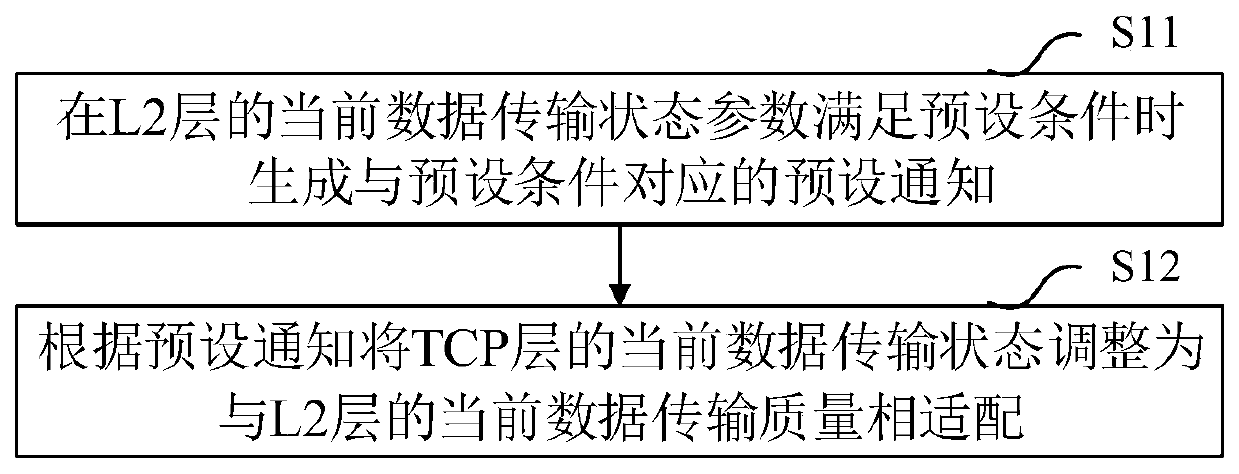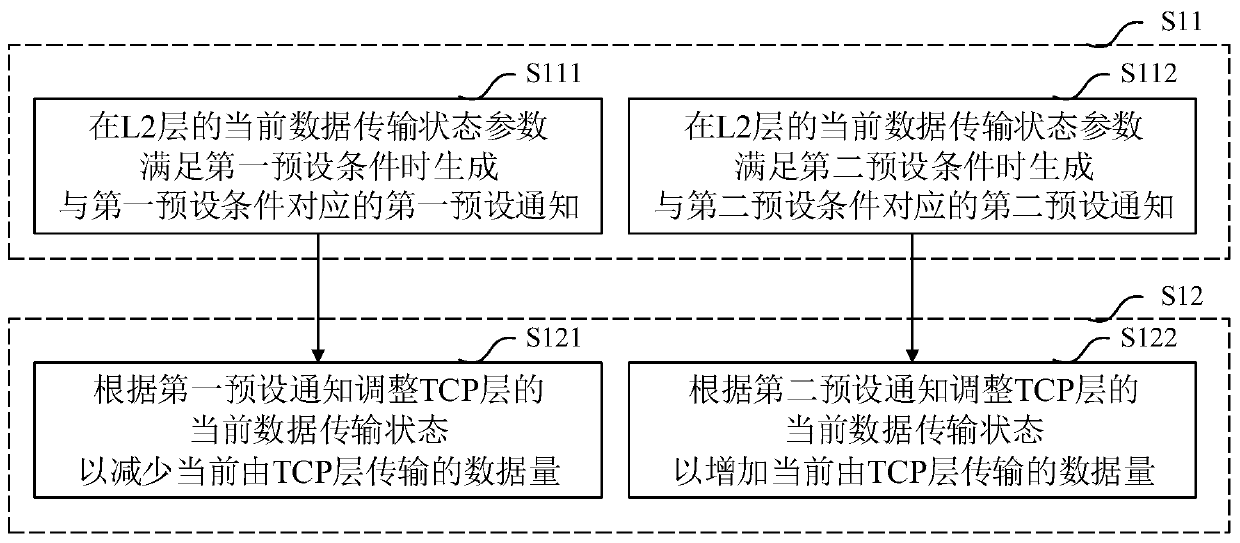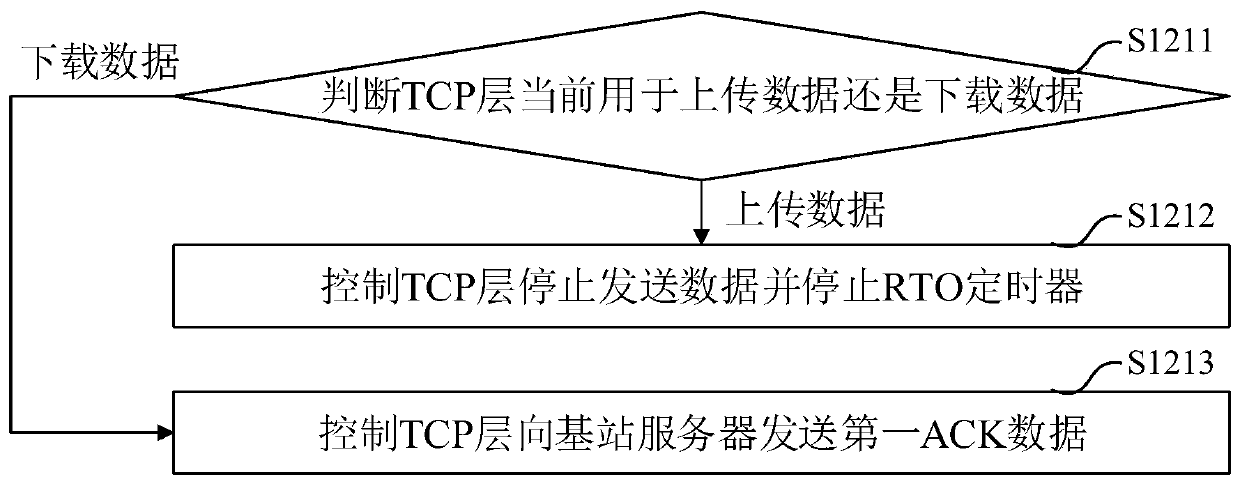Method and system e for cooperatively controlling TCP layer, device, medium and communication terminal
A collaborative control and communication terminal technology, applied in transmission systems, wireless communications, digital transmission systems, etc., can solve the problem that the TCP layer cannot perceive the underlying transmission situation in time
- Summary
- Abstract
- Description
- Claims
- Application Information
AI Technical Summary
Problems solved by technology
Method used
Image
Examples
Embodiment 1
[0103] This embodiment provides a method for cooperatively controlling the TCP layer applied to a communication terminal, wherein, for example, the communication terminal may support communication modes such as LTE and WCDMA, refer to figure 1 , the method of this embodiment includes:
[0104] S11. Generate a preset notification corresponding to the preset condition when the current data transmission state parameter of the L2 layer satisfies the preset condition;
[0105] S12. Adjust the current data transmission state of the TCP layer to match the current data transmission quality of the L2 layer according to the preset notification.
[0106] In this embodiment, the L2 layer includes the RLC layer and the MAC layer, and the data transmission status parameter is used to characterize the data transmission quality of the L2 layer. For example, the data transmission status parameter may include but not limited to the working mode of the RLC layer, the cache of the RLC layer The ...
Embodiment 2
[0130] On the basis of Embodiment 1, this embodiment provides a method for cooperatively controlling the TCP layer, referring to Figure 5 , when the RLC layer is in AM mode, this embodiment also includes before step S11:
[0131] S21. Determine whether the TCP layer is currently used for uploading data or downloading data;
[0132] If uploading data, then execute step S22; if downloading data, then execute step S26;
[0133] S22. Determine whether the current cached data volume of the RLC layer is greater than a first threshold and whether the HARQ failure rate of the MAC layer is greater than a second threshold;
[0134] If yes, execute step S23; if not, execute step S24;
[0135] S23. Determine that the current data transmission state parameter of the L2 layer satisfies the first preset condition;
[0136] S24. Determine whether the current cached data volume of the RLC layer is less than a third threshold and whether the HARQ failure rate of the MAC layer is less than a...
Embodiment 3
[0150] On the basis of Embodiment 1, this embodiment provides a method for cooperatively controlling the TCP layer, referring to Figure 6 , when the RLC layer is in UM mode, this embodiment also includes before step S11:
[0151] S31. Determine whether the TCP layer is currently used for uploading data or downloading data;
[0152] If uploading data, then execute step S32; if downloading data, then execute step S36;
[0153] S32. Determine whether the HARQ failure rate of the MAC layer is greater than the ninth threshold;
[0154] If yes, execute step S33; if not, execute step S34;
[0155] S33. Determine that the current data transmission state parameter of L2 satisfies the first preset condition;
[0156] S34. Determine whether the HARQ failure rate of the MAC layer is less than a tenth threshold;
[0157] If so, execute step S35;
[0158] S35. Determine that the current data transmission state parameter of the L2 layer satisfies the second preset condition;
[0159] ...
PUM
 Login to View More
Login to View More Abstract
Description
Claims
Application Information
 Login to View More
Login to View More - R&D Engineer
- R&D Manager
- IP Professional
- Industry Leading Data Capabilities
- Powerful AI technology
- Patent DNA Extraction
Browse by: Latest US Patents, China's latest patents, Technical Efficacy Thesaurus, Application Domain, Technology Topic, Popular Technical Reports.
© 2024 PatSnap. All rights reserved.Legal|Privacy policy|Modern Slavery Act Transparency Statement|Sitemap|About US| Contact US: help@patsnap.com










